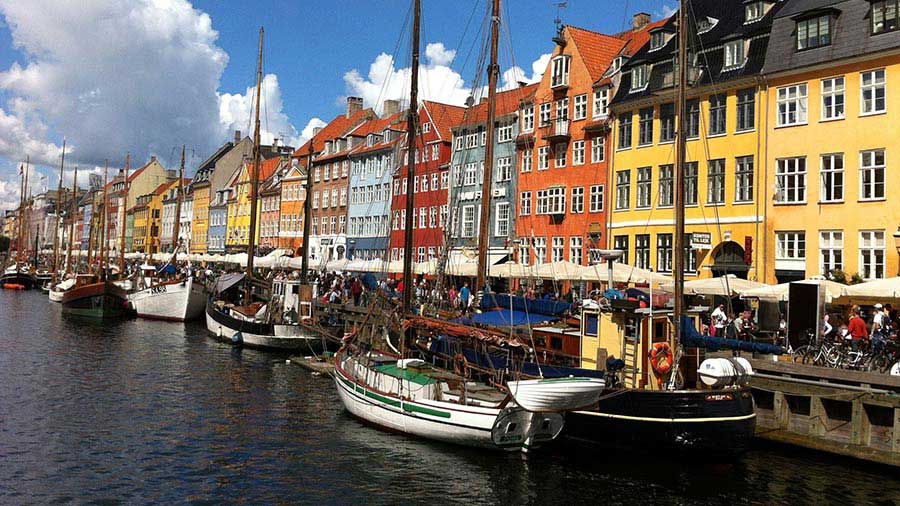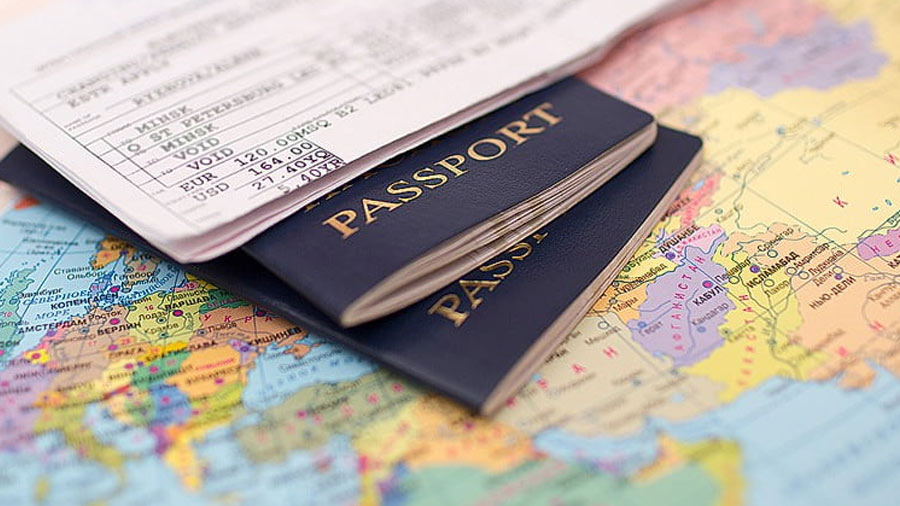Top 10 Chinese Films for the Chinese New Year
Op-Ed Commentary: Chris Devonshire-Ellis
Feb. 2 – Today is Chinese New Year’s Eve, the busiest and noisiest day of the year. Although New Years Day is spent with relatives and friends, good food and relaxing, it’s the New Years Eve that has all the excitement—leading up to midnight, many traditions take place, from the making and consuming of delicious jiaozi (small steamed dumplings), to the letting off of millions of fireworks and firecrackers at midnight, it’s one of the great times to be in China. This year, I’ll be spending it as usual with family in Beijing—it’s about -15 in the evening here, and the fireworks outside will leave us stamping the ground to keep warm. The rest of the week is a national holiday. During that time, it’s a great opportunity to relax away from business and contemplate Chinese culture. It’s an important part of business of course—an understanding of Chinese sensibilities and history can go a long way to smoothing the path of any businessman operating in the country. A good way to acquaint oneself with Chinese culture is via film. Here then, I review my top ten Chinese films—all readily available and all with English dialogue and/or subtitles. If you want to get a feel for China—or just relax in front of a great DVD—these are my top ten picks.
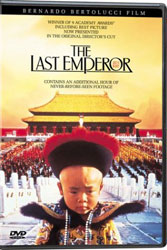 1. The Last Emperor (1987) It wasn’t just Deng Xiaoping who opened up modern China to the world—this seminal work, directed by Bernardo Bertolucci was instrumental in introducing the splendor of China to a worldwide audience who just a few years before, had had their first glimpses of a closed country through the trial of the Gang of Four. The Last Emperor tells the life story of Pu Yi, who abdicated the Chinese throne in 1912. The film was the first to be allowed permission to shoot in the Forbidden City, and centers on Pu Yi’s relationship with his English language teacher (Peter O’Toole). It was a splendid re-introduction to a country cut off from the rest of the world for 50 years. Critics thought so too—The Last Emperor won nine Oscars.
1. The Last Emperor (1987) It wasn’t just Deng Xiaoping who opened up modern China to the world—this seminal work, directed by Bernardo Bertolucci was instrumental in introducing the splendor of China to a worldwide audience who just a few years before, had had their first glimpses of a closed country through the trial of the Gang of Four. The Last Emperor tells the life story of Pu Yi, who abdicated the Chinese throne in 1912. The film was the first to be allowed permission to shoot in the Forbidden City, and centers on Pu Yi’s relationship with his English language teacher (Peter O’Toole). It was a splendid re-introduction to a country cut off from the rest of the world for 50 years. Critics thought so too—The Last Emperor won nine Oscars.
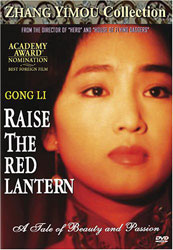 2. Raise The Red Lantern (1991) A tale of love and betrayal in a 1920’s Northern Chinese landlords home, set amongst beautiful scenery and the Chinese tradition of concubines, Raise The Red Lantern introduced a stunning looking Gong Li to a global audience and marked the ascent of Zhang Yimou, one of China’s best known film directors. Tragedy unfolds as the beautiful fourth wife (Li) struggles to make an impact on her master’s desire to have a male heir, and the conniving and plotting of the three previous wives to derail her ambitions. Nominated for an Oscar (best foreign language film) Raise The Red Lantern picked up a slew of international film festival awards and remains one of the most breathtaking examples of Chinese cinematography.
2. Raise The Red Lantern (1991) A tale of love and betrayal in a 1920’s Northern Chinese landlords home, set amongst beautiful scenery and the Chinese tradition of concubines, Raise The Red Lantern introduced a stunning looking Gong Li to a global audience and marked the ascent of Zhang Yimou, one of China’s best known film directors. Tragedy unfolds as the beautiful fourth wife (Li) struggles to make an impact on her master’s desire to have a male heir, and the conniving and plotting of the three previous wives to derail her ambitions. Nominated for an Oscar (best foreign language film) Raise The Red Lantern picked up a slew of international film festival awards and remains one of the most breathtaking examples of Chinese cinematography.
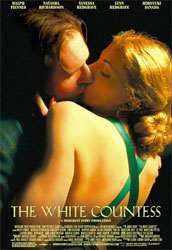 3. The White Countess (2005) Set in Shanghai just prior to the Japanese invasion, The White Countess tells the story of a family of a white Russian princess (Natasha Richardson) making a living as a prostitute, then as a nightclub hostess supported by the blind American entrepreneur, Todd Jackson (Ralph Fiennes). As a Japanese spy infiltrates the nightclub, Jackson finds himself at odds with the American community as Shanghai descends rapidly into chaos. It poignantly reminds us of the fate of many white Russians after the Bolshevik revolution of 1917, features beautiful shots of well known Shanghai landmarks, and replays the desperate attempts of the day to seek refuge in British-controlled Hong Kong from the invading Japanese.
3. The White Countess (2005) Set in Shanghai just prior to the Japanese invasion, The White Countess tells the story of a family of a white Russian princess (Natasha Richardson) making a living as a prostitute, then as a nightclub hostess supported by the blind American entrepreneur, Todd Jackson (Ralph Fiennes). As a Japanese spy infiltrates the nightclub, Jackson finds himself at odds with the American community as Shanghai descends rapidly into chaos. It poignantly reminds us of the fate of many white Russians after the Bolshevik revolution of 1917, features beautiful shots of well known Shanghai landmarks, and replays the desperate attempts of the day to seek refuge in British-controlled Hong Kong from the invading Japanese.
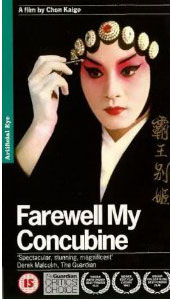 4. Farewell My Concubine (1993) To date, the only Chinese language film to win the Palme d’Or, Farewell My Concubine was directed by Chen Kaige and tells the story of two men, one dressed as a female lead (Leslie Cheung) and the other as a male, in Chinese Opera shortly after the end of the cultural revolution in 1977. The film tracks their earlier career in pre-revolutionary China as famous opera singers, and delves into the personalities of each, including sexual references and the twisted fate of love and desire. It was nominated for an Oscar (best foreign film), and features extensive use of Peking Opera as a backdrop, especially the costumes in such productions.
4. Farewell My Concubine (1993) To date, the only Chinese language film to win the Palme d’Or, Farewell My Concubine was directed by Chen Kaige and tells the story of two men, one dressed as a female lead (Leslie Cheung) and the other as a male, in Chinese Opera shortly after the end of the cultural revolution in 1977. The film tracks their earlier career in pre-revolutionary China as famous opera singers, and delves into the personalities of each, including sexual references and the twisted fate of love and desire. It was nominated for an Oscar (best foreign film), and features extensive use of Peking Opera as a backdrop, especially the costumes in such productions.
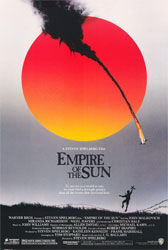 5. Empire Of The Sun (1987) Directed by Steven Spielberg and based upon the novel by J.G. Ballard, this is another film set in Shanghai just prior to the Japanese invasion. Based on a true story, the films events center around a young British boy (Christian Bale) who becomes lost from his parents in the rush to leave the city, and returns to his family home as the Japanese invade. Playing a cat and mouse game with the Japanese soldiers, he is eventually captured and interned in a prison camp. The young boy then gradually loses his innocence as the perils of survival reveal a darker side to life. Empire Of The Sun was nominated for six Oscars.
5. Empire Of The Sun (1987) Directed by Steven Spielberg and based upon the novel by J.G. Ballard, this is another film set in Shanghai just prior to the Japanese invasion. Based on a true story, the films events center around a young British boy (Christian Bale) who becomes lost from his parents in the rush to leave the city, and returns to his family home as the Japanese invade. Playing a cat and mouse game with the Japanese soldiers, he is eventually captured and interned in a prison camp. The young boy then gradually loses his innocence as the perils of survival reveal a darker side to life. Empire Of The Sun was nominated for six Oscars.
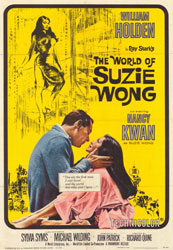 6. The World Of Suzie Wong (1960) Adapted from the famous novel by Richard Mason, The World of Suzie Wong is an iconic tale of love and romance set in post-war Hong Kong, which was still very much under British rule. William Holden and Nancy Kwan star as Richard Lomax and a Wanchai prostitute named Suzie Lomax meets on the Star Ferry. The film set off a slew of “who was the real Suzie?” searches, and some bars in Wanchai to this day still market themselves as the original bar Suzie worked in. The hotel featured in the movie still exists. It’s a charming period piece, and for those who are familiar with Hong Kong today, good fun to spot the differences between then and now. The film was nominated for two Golden Globes.
6. The World Of Suzie Wong (1960) Adapted from the famous novel by Richard Mason, The World of Suzie Wong is an iconic tale of love and romance set in post-war Hong Kong, which was still very much under British rule. William Holden and Nancy Kwan star as Richard Lomax and a Wanchai prostitute named Suzie Lomax meets on the Star Ferry. The film set off a slew of “who was the real Suzie?” searches, and some bars in Wanchai to this day still market themselves as the original bar Suzie worked in. The hotel featured in the movie still exists. It’s a charming period piece, and for those who are familiar with Hong Kong today, good fun to spot the differences between then and now. The film was nominated for two Golden Globes.
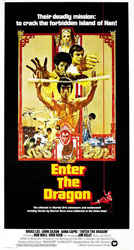 7. Enter The Dragon (1973) It’s impossible not to feature a martial arts film in an article about Chinese cinema, and it’s a category so well established that it really needs an editorial piece of its own. (For more contemporary examples, pretty much any film directed by Tsui Hark is a reference). Enter The Dragon though is legendary, not least as it features Bruce Lee, who died six days prior to the film’s original Hong Kong release. Lee plays the role of a Shaolin Monk who possesses great philosophical insight into martial arts as well as physical prowess. He receives an invitation to a martial arts competition on an island organized by the mysterious Han, and ends up as a result in a series of fights and challenges as he seeks to use martial arts to promote peace rather than violence.
7. Enter The Dragon (1973) It’s impossible not to feature a martial arts film in an article about Chinese cinema, and it’s a category so well established that it really needs an editorial piece of its own. (For more contemporary examples, pretty much any film directed by Tsui Hark is a reference). Enter The Dragon though is legendary, not least as it features Bruce Lee, who died six days prior to the film’s original Hong Kong release. Lee plays the role of a Shaolin Monk who possesses great philosophical insight into martial arts as well as physical prowess. He receives an invitation to a martial arts competition on an island organized by the mysterious Han, and ends up as a result in a series of fights and challenges as he seeks to use martial arts to promote peace rather than violence.
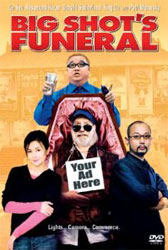 8. Big Shot’s Funeral (2001) A comedy set largely in Beijing’s’ Forbidden City, in which a famous American film director (Donald Sutherland, in a role rumored to be based on Steven Spielberg) is on location directing a new blockbuster. Part way through the filming, he apparently dies of a heart attack. Chinese opportunism then ramps up into overdrive as the local cast see money making opportunities and commence selling advertising space at the proposed funeral. Very silly, a lot of fun, and Sutherland is superb.
8. Big Shot’s Funeral (2001) A comedy set largely in Beijing’s’ Forbidden City, in which a famous American film director (Donald Sutherland, in a role rumored to be based on Steven Spielberg) is on location directing a new blockbuster. Part way through the filming, he apparently dies of a heart attack. Chinese opportunism then ramps up into overdrive as the local cast see money making opportunities and commence selling advertising space at the proposed funeral. Very silly, a lot of fun, and Sutherland is superb.
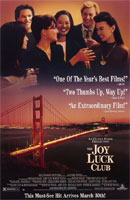 9. The Joy Luck Club (1993) Amy Tan’s famous novel brought to life for the big screen, The Joy Luck Club tells the story of four Chinese women who flee war-torn Shanghai to make a new life in San Francisco. Dealing with the prejudices and cultural differences between Chinese and American society, the film was directed by Oliver Stone and is centered around the women’s mahjong club—giving them opportunity to discuss their lives, their children and the difficulties involved in their adapting to the American lifestyle. American men wishing to impress their Chinese girlfriend’s mothers during Chinese New Year should pay attention to the soy sauce scene.
9. The Joy Luck Club (1993) Amy Tan’s famous novel brought to life for the big screen, The Joy Luck Club tells the story of four Chinese women who flee war-torn Shanghai to make a new life in San Francisco. Dealing with the prejudices and cultural differences between Chinese and American society, the film was directed by Oliver Stone and is centered around the women’s mahjong club—giving them opportunity to discuss their lives, their children and the difficulties involved in their adapting to the American lifestyle. American men wishing to impress their Chinese girlfriend’s mothers during Chinese New Year should pay attention to the soy sauce scene.
 10. A Chinese Ghost Story (1987) A romantic-ghost-horror story, A Chinese Ghost Story is one of the best examples of contemporary Chinese tongue-in-cheek horror stories with a liberal dash of martial arts special effects. Directed by Tsui Hark, and starring Leslie Cheung, it features a timid tax collector, traveling at night, being accosted by a beautiful young lady named Nie Xiaoquan. Later, recalling their conversation, he becomes convinced that she was really a spirit. Partly in love with her apparition, he seeks her out the following evening, and she tells him she has been held prisoner by an evil tree demon. Her pleas for him to help her invariably lead to all sorts of demonic carrying on and supernatural flying about. Much of the Harry Potter films’ action sequences were heavily influenced by the choreography in A Chinese Ghost Story.
10. A Chinese Ghost Story (1987) A romantic-ghost-horror story, A Chinese Ghost Story is one of the best examples of contemporary Chinese tongue-in-cheek horror stories with a liberal dash of martial arts special effects. Directed by Tsui Hark, and starring Leslie Cheung, it features a timid tax collector, traveling at night, being accosted by a beautiful young lady named Nie Xiaoquan. Later, recalling their conversation, he becomes convinced that she was really a spirit. Partly in love with her apparition, he seeks her out the following evening, and she tells him she has been held prisoner by an evil tree demon. Her pleas for him to help her invariably lead to all sorts of demonic carrying on and supernatural flying about. Much of the Harry Potter films’ action sequences were heavily influenced by the choreography in A Chinese Ghost Story.
Readers may have their own favorites to share. If so, please leave your suggestions below! Happy Chinese New Year of the rabbit!
![]() For much more about Chinese culture, please see China Expat – our highly popular cultural, travel and literary website for the foreign businessman and expatriate interested in Chinese culture. Now in its tenth year.
For much more about Chinese culture, please see China Expat – our highly popular cultural, travel and literary website for the foreign businessman and expatriate interested in Chinese culture. Now in its tenth year.
- Previous Article So What’s the China Deal with India and Vietnam?
- Next Article Happy Chinese New Year of the Rabbit
